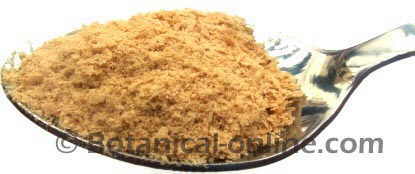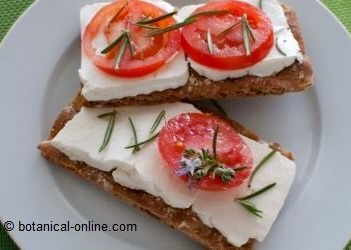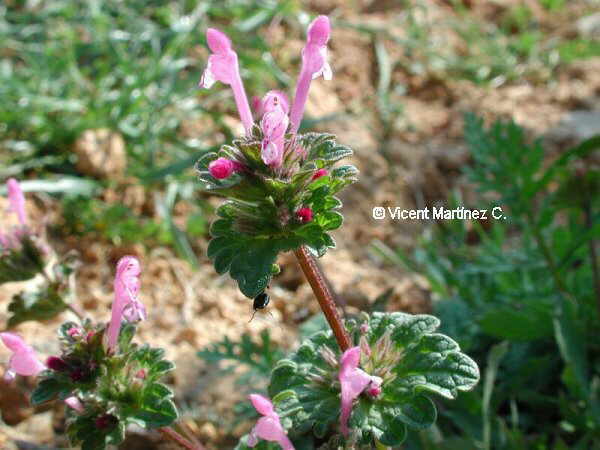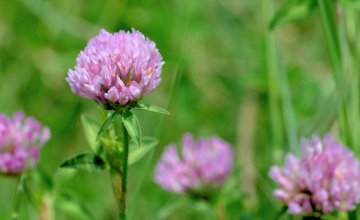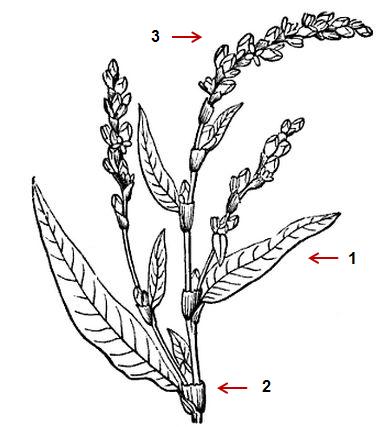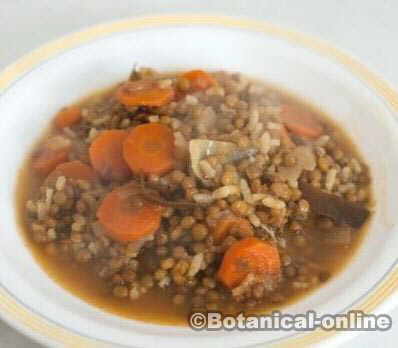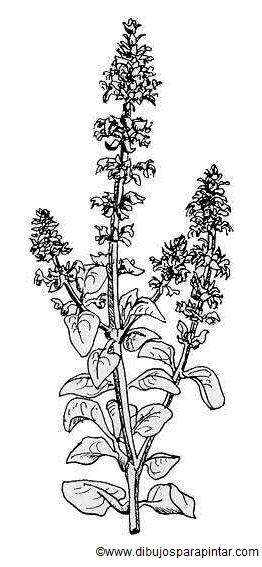Contents
- 1 Main plant diseases
- 1.1 Diseases of garden
- 1.2 Types of plant diseases
- 1.3 Fungal diseases
- 1.4 Powdery mildew, fungal plant disease
- 1.5 Mildew, fungal plant disease
- 1.6 Rust, fungal plant disease
- 1.7 Anthracnose or brown leaf spot, fungal plant disease
- 1.8 Honey fungus
- 1.9 Botrytis or gray mold
- 1.10 Sooty mold
- 1.11 Shot hole disease
- 1.12 Diseases caused by bacteria (bacterial plant diseases)
- 1.13 Bacterial blight
Main plant diseases
Diseases of garden
Agriculture consists of modifying the ecosystem of a field by eliminating certain plants and animals in order to grow other plants that are more interesting on a commercial or nutritional level. This brutal modification of the environment turns a crop field into the perfect target for diseases, since the environmental imbalance suppresses many of the natural defenses that plants have to defend themselves.
Types of plant diseases
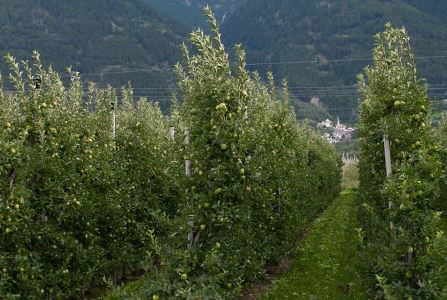
Plant diseases can be classified according to:
- Diseases caused by fungi (fungal plant diseases): Powdery mildew, downy mildew, anthracnose or brown leaf spot, Botrytis or gray mold, sooty molds, shot hole disease
- Diseases caused by bacteria (bacterial plant diseases): bacterial blight, etc.
Fungal diseases
Plants are mainly attacked by a multitude of fungi. Among the most important garden diseases we can mention:
Powdery mildew, fungal plant disease
It is one of the most common plant diseases. It appears in spring, but its effects may last throughout the summer or fall. It is a fungal disease that covers the leaves, fruits, branches or shoots with a white powdery coating.

This disease causes twisting of the leaves, deformation of the shoots and lack of flowering. Gradually, the plant weakens and ends up dying.
Spraying the plants with a fungicide and avoiding overhead irrigation are the most important tips to treat this pest. It is advisable to apply one treatment in winter and another in early spring, especially in rainy weather, as humidity increases the growth of the fungus. In addition, it is advisable to cut off the affected parts and get rid of the infected material so that it does not contaminate healthy plants.
It affects many garden plants such as roses, carnations, chrysanthemums, begonias, primroses, asters, dahlias, etc., especially when these are grown in greenhouses and the environment inside them is too humid or when the roots of the flowers are too dry. It can also affect many plants in our garden, such as melons, pumpkins, peaches or cucumbers.
Mildew, fungal plant disease
This is another disease caused by fungi, which attacks with all its virulence in summer, but can appear in late spring, affecting both such as azaleas, begonias or dahlias, as well as some vegetables, perennials and some shrubs such as vines. Increased heat and humidity favor its development. Removal of affected parts and spraying with adequate fungicides are effective.
Rust, fungal plant disease
These are diseases caused by fungi mainly of the Puccinia and Melampsora genera. It is produced on the leaves of trees and shrubs, indoor plants, fruit trees, vegetables and greens. They are mainly distinguished by the presence of small reddish or brown spots on the underside of the leaves, which are the spores grouped in this area. On the upper side of the leaf they correspond to yellow spots.
Many flowers such as azaleas, chrysanthemums, carnations, snapdragons, dahlias, pelargoniums, ficus or begonias are affected by this type of fungus, especially when they are grown in greenhouses with high humidity in the environment or when they are grown at home and the roots are not sufficiently watered. Lack of irrigation weakens the resistance of the specimens and can be as much a determining factor in infection as excess humidity.
Other times, in certain plants, the attack occurs on the stems, causing a type of dark brown or orange-yellow pustules that, in the worst cases, can cause their death.
High humidity conditions favor the dispersion of spores. Other times they are dispersed by the wind. To reduce the risk of infection, it is advisable not to place the plants too close together and distribute them in ventilated areas. Improved soil drainage and cleaning soil will also ensure that the remaining moisture is lower. It is necessary to burn the infected leaves.
Treatment of this disease can be done with the application of fungicides, such as mancozeb, which prevent the disease from progressing and invading unaffected leaves.
Anthracnose or brown leaf spot, fungal plant disease
They are brown or gray spots surrounded by a yellow halo that occur on the lower leaves. These spots generally grow and cause defoliation of the branches or affected tree. Other times the stained part falls off the leaf and leaves holes or empty pieces in it.
Leaf spots are caused by different fungi (Colletotrichum, Discula, Venturia, Gnomonia, Septoria, Marssonina, Phyllosticta, Physalospora, etc.). The best way to prevent their attack is to clean all the soil material where these parasites usually hibernate.
In the case of trees, it is advisable to cut the branches or parts of the infected tree, as well as control its health with adequate irrigation and fertilization. An analysis of the infected material will provide us with the type of attacker fungus in order to apply the appropriate fungicide. It can affect forest trees, as well fruit trees or vegetables.
Honey fungus
Honey fungus = honey mushroom (Armillaria mellea) is a fungus that causes the death of many shrubs and trees (mangos, cherry trees, peach trees, pistachio trees, almond trees, apricot trees, plum trees, papaya trees, kermes oak, rose bushes, vines, etc.). It is one of the main parasites of many plants since the mycelium settles in their roots and causes root rot.
Botrytis or gray mold
Botrytis or gray mold (Botrytis cinerea), also known as “gray mould” occurs when there is too much humidity in the environment, causing plant rot. Dark or gray spots appear on the plant in the form of mold. It produces blackening of the inflorescence.
Traditional cultivation uses some systemic insecticide combined with the elimination of affected plants. To prevent subsequent infections, it is recommended to stop growing plants of the affected genus for 4 or 5 years, to select uninfected seeds or to sterilize them with water at 45 ºC for half an hour.
Among the main types of botrytis we can mention the following: Tulip fire (Botrytis tulipae); lily gray mold (Botrytis elliptica); chocolate spot (Botrytis favae).
Sooty mold
It is characterized by a black coating that stains the branches and leaves of the birch. It is produced by insect secretions on which numerous fungi develop. This blackish layer can be washed away, although underneath it usually appears diseased tissue affected by fungi that have developed on the powdery coating. On other occasions, even if the tissue is not damaged, the presence of this black coating prevents the plant from breathing properly.
Insects that produce sooty mold disease include are aphids, aphids, whiteflies, etc. The best way to prevent or treat the disease is to control the insects that produce this disease with insecticides.
Shot hole disease
Shot hole disease is a disease caused by the fungus Clasterosporium carpophylum. It manifests itself in the form of brown spots that, when falling, produce holes in the leaves as if they were affected by pellets from a shotgun blast. It especially affects plum, cherry and peach trees. The solution is based on providing more strength to the trees so that they do not become infected (Protection from cold, adequate irrigation, foliar fertilizer, etc.) In case of contagion, the solution would be to use a cupric fungicide in summer.
Diseases caused by bacteria (bacterial plant diseases)
Plants are also attacked by many bacteria. Among the most important we can mention:
Bacterial blight
Bacterial blight (Pseudomonas syringae) is a bacteria that penetrates the interior of the stems through wounds, cuts, frostbite, etc. Inside the tissues, it produces a toxin (syringomycin) that facilitates the growth of new bacteria as well as the production of a protein that makes the plant more susceptible to damage by the cold.
It affects numerous plant species since there are different varieties of this bacteria. Among the most well-known are:
Pseudomonas syringae pv. lapsa (Brown rust), Pseudomonas syringae pv. pisi (Pea bacterial blight), Pseudomonas syringae pv. aptata (Bacterial leaf spot), Pseudomonas syringae pv. japonica (Bacterial canker)…
This disease only affects young branches from the previous year or cuttings that have been prepared for new plantings. A black or reddish-brown canker develops in these young parts that can affect from a couple of centimeters to the entire branch. It affects the buds that die and the leaves that turn yellow and fall.
To control this disease, pruning the affected branches as soon as possible is required. The use of nitrogen fertilizers in late summer is not recommended because it encourages the growth this bacteria. Chemical control involves the use of cupric insecticides in early October and early November.
![]() More information on garden crops, tasks and care
More information on garden crops, tasks and care

